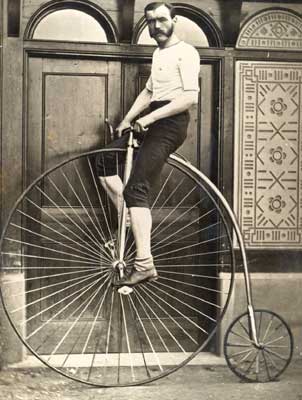Interesting facts about bikes and cycles
Learn something new about the development of bikes and cycles
Did you know?
The first two wheeled rider propelled machine was inventedby Baron Karl de Drais de Sauerbrun, in France in 1818. It was entirely made of wood.
In 1839 a Scot called Kirkpatrick Macmillan made a machine for a rider which had wheels rimmed with iron. Instead of pedals it used cranks- but it was not a success.

The next type of bike to be invented was one dubbed "the boneshaker", weighing around 160lb. It became very popular and in 1868 the first boneshaker bicycle race was held.In 1870, James Starley, who became known as the father of the bicycle industry, developed the famous Penny-Farthing in England. It was named after the largest and the smallest copper coins in the currency at that time. In the 1870s a party of enthusiasts are said to have ridden Penny-Farthings from Lands End to John O'Groats (690 miles) in 15 days. Since the 1890s the basic design has remained fairly similar although many refinements have been made over the last 100 years.
Mountain bikes were developed in the 1970s

Bikes have been developed for different uses such astouring, racing or all terrain cycling. Mountain bikes were invented in the mid1970s and are one of the most popular types of bike today. They have up to 21gears, wide heavy treaded tires and can cost thousands of pounds.
20 million bikes are owned in the UK, which means that 1 in3 adults has one - although only 6 million people are regular cycle users.
The first National Bike Week was organised in 1923 by the Cyclists' Touring Club.
Cycling at least 20 miles a week cuts in half your risk of heart disease compared to non-cyclists who take no exercise, according to the British Heart Foundation. The British Medical Association also recommends that you cycle daily.












